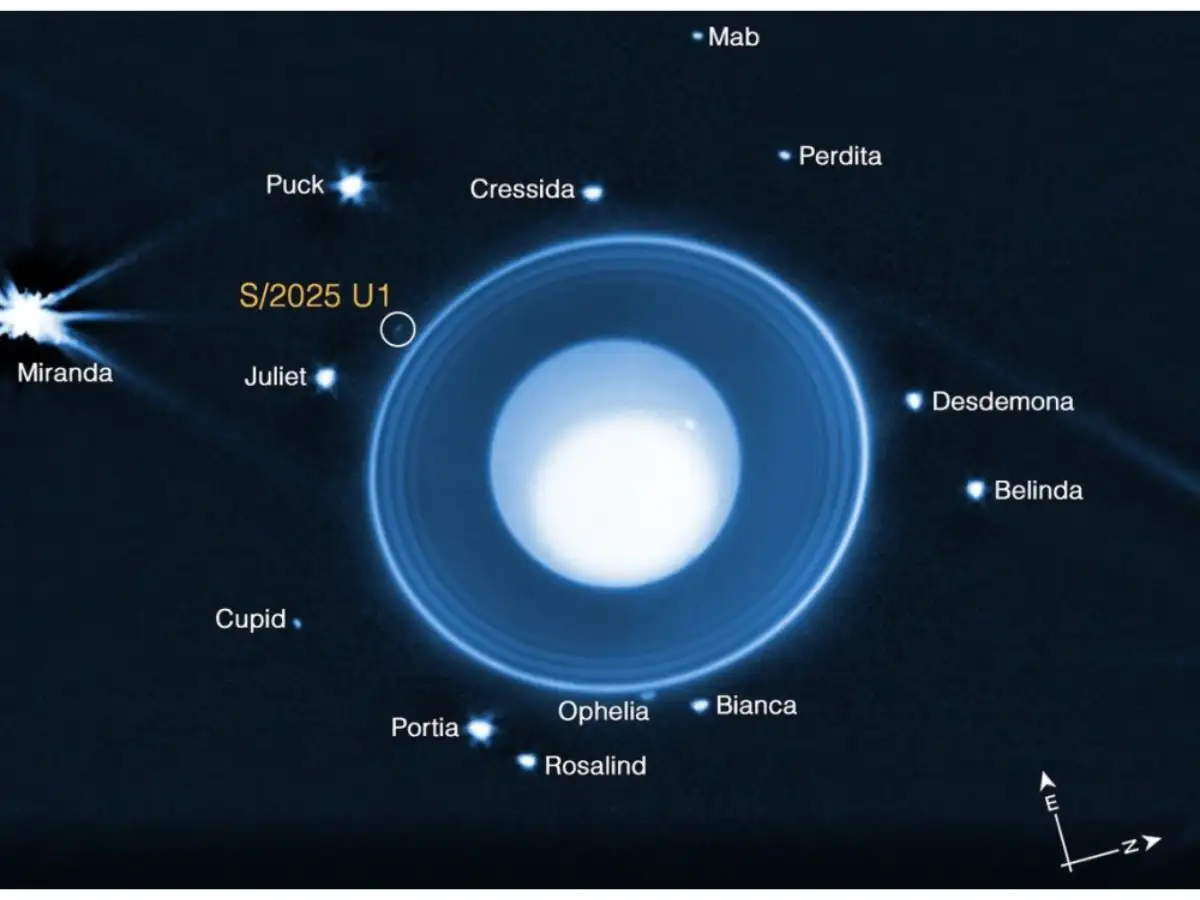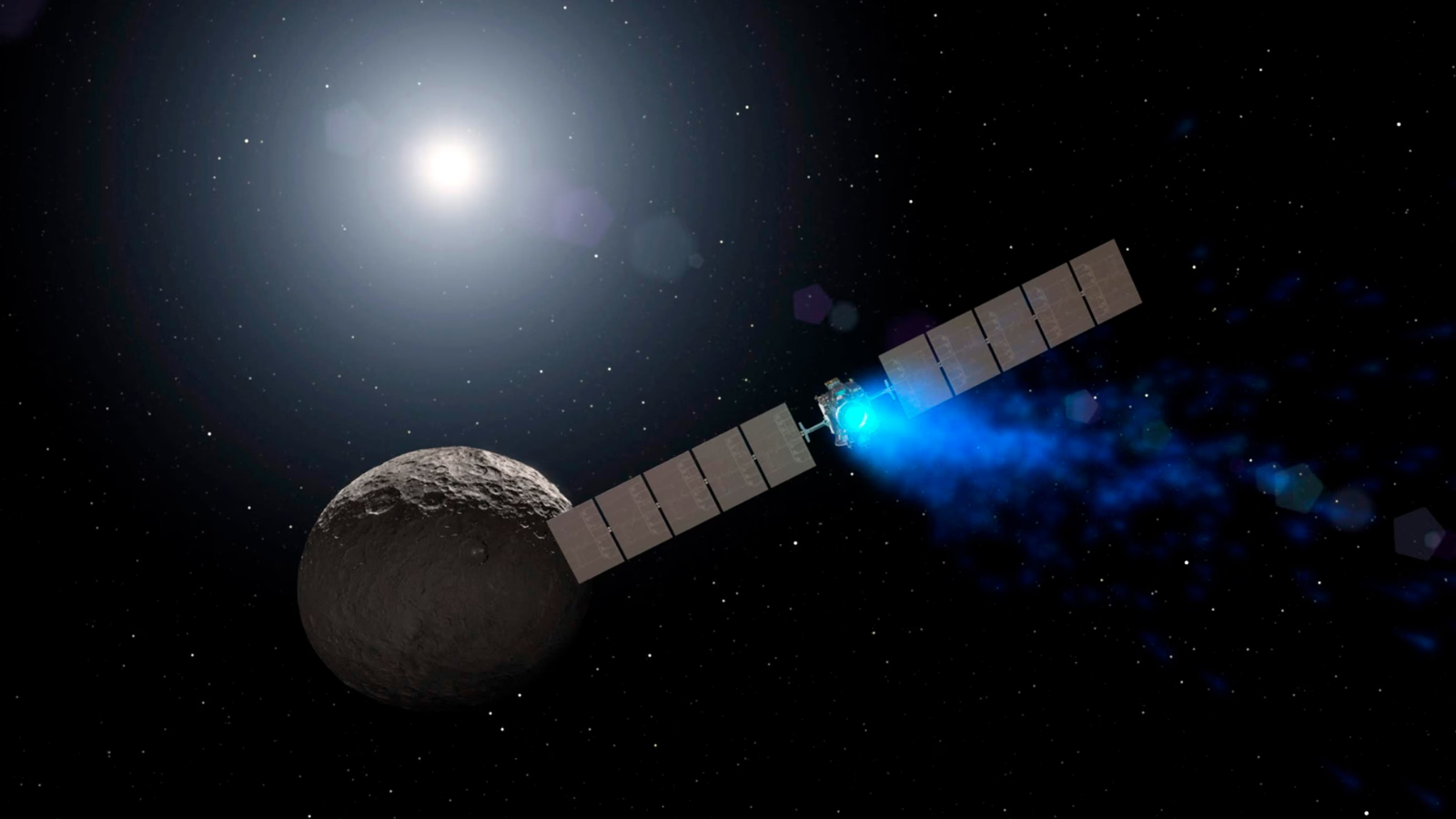
In a groundbreaking achievement that underscores the unending curiosity of humanity and the advancements in space technology, NASA has announced the discovery of a new moon orbiting the distant planet Uranus. This celestial body, designated as S/2025 U1, marks the 29th natural satellite identified around Uranus, expanding our understanding of this enigmatic ice giant and its complex satellite system. The discovery is not only a testament to our technological progress but also a tantalizing glimpse into the intricate dynamics of our solar system’s outer regions.
Unveiling the Hidden Moon: The Role of Advanced Telescopes
The recent detection of S/2025 U1 was made possible through the utilization of NASA’s sophisticated space telescopes, particularly the revolutionary James Webb Space Telescope (JWST). This mission marked a significant milestone, enabling astronomers to peer deeper into the outer solar system than ever before. The high-resolution imaging capabilities and sensitive instruments allowed scientists to identify this tiny celestial body, which, due to its minuscule size and faint reflectivity, had remained hidden from earlier observations.
According to reports from NASA Science (.gov), the discovery process involved meticulous analysis of the planet’s orbit, reflective properties, and motion patterns, which helped confirm the moon’s existence despite its small size.
Characteristics of the Newly Discovered Moon: Tiny but Significant
One of the most remarkable aspects of this discovery is the tiny size of S/2025 U1. According to ScienceAlert, this moon is so small that it could be compared to walking around its entire surface in a matter of minutes. Its diminutive size challenges previous assumptions that moons of such planets are predominantly large and easily detectable from afar. Instead, it prompts a new perspective that smaller celestial bodies are hiding in plain sight, waiting to be discovered with precision instruments.
The Significance of the Discovery for Uranus’ Satellite System
The addition of S/2025 U1 to Uranus’ collection of moons significantly enriches our understanding of the planet’s complex gravitational environment. Uranus, with its 27 previously known moons, was already considered an intriguing object of study because of its unique tilt and orientation. Discovering a new tiny moon adds layers to our comprehension of the planet’s gravitational interactions, orbital dynamics, and historical evolution.
Moreover, the discovery emphasizes the possibility of many more such small moons orbiting Uranus or other distant planets, which have remained elusive due to technological limitations. These moons may hold clues about the formation and migration of planets in our solar system, offering insights into the primordial conditions of planetary development billions of years ago.
Implications for Future Space Missions and Research
The detection of S/2025 U1 underscores the importance of continuous technological innovation in planetary astronomy. As tools like the Webb Telescope and future missions evolve, scientists anticipate uncovering even more hidden moons and celestial objects in our solar system and beyond. These discoveries can unravel the history of planetary systems, inform the design of future missions, and potentially guide resource utilization strategies in space exploration.
Additionally, the discovery raises questions about the stability of these tiny moons and their long-term orbital paths. Are they remnants of larger bodies broken apart over time? Do they offer clues about the conditions that led to the formation of Uranus’ larger moons? These questions will undoubtedly inspire further research and observational campaigns in the coming years.
Conclusion: Changing Our Perspective of the Outer Solar System
NASA’s recent discovery of the 29th moon orbiting Uranus, S/2025 U1, opens a new chapter in our quest to understand the intricate ballet of celestial bodies in the far reaches of our solar system. It demonstrates how far technological advancements have come, enabling us to detect the smallest of moons, and highlights the universe’s endless capacity for surprises.
As we continue to explore and study the outer planets, each new discovery reshapes our understanding of planetary formation, orbital mechanics, and celestial evolution. The tiny moon around Uranus is a reminder that even the smallest objects can have a significant story to tell—stories that bring us closer to unraveling the mysteries of our cosmic neighborhood.
Get ready for more astonishing revelations as space agencies and scientists keep pushing the boundaries of exploration.
For more updated news please keep visiting Prime News World.








